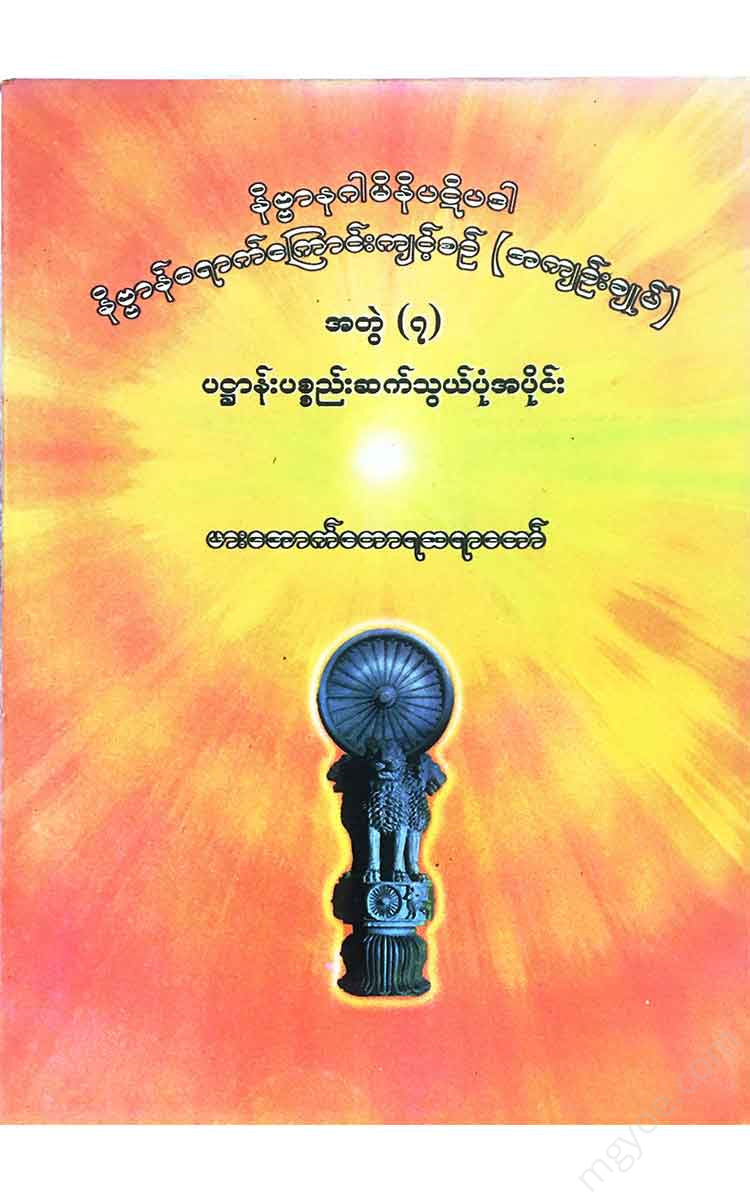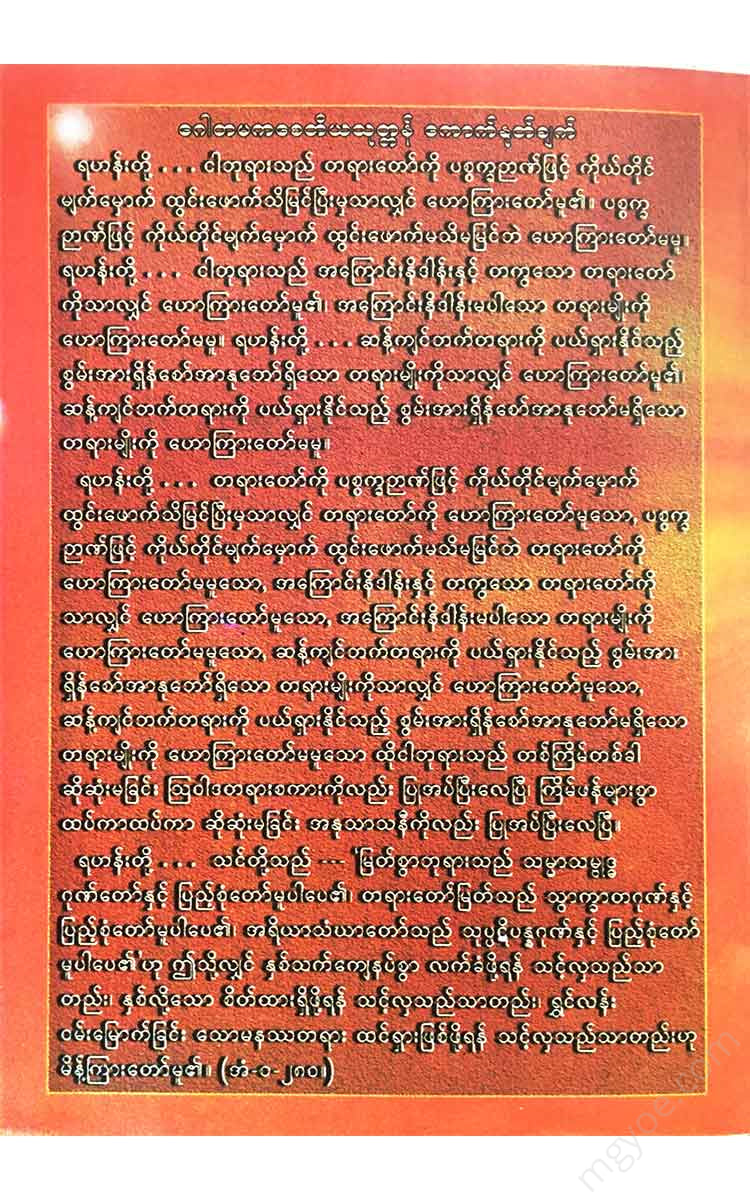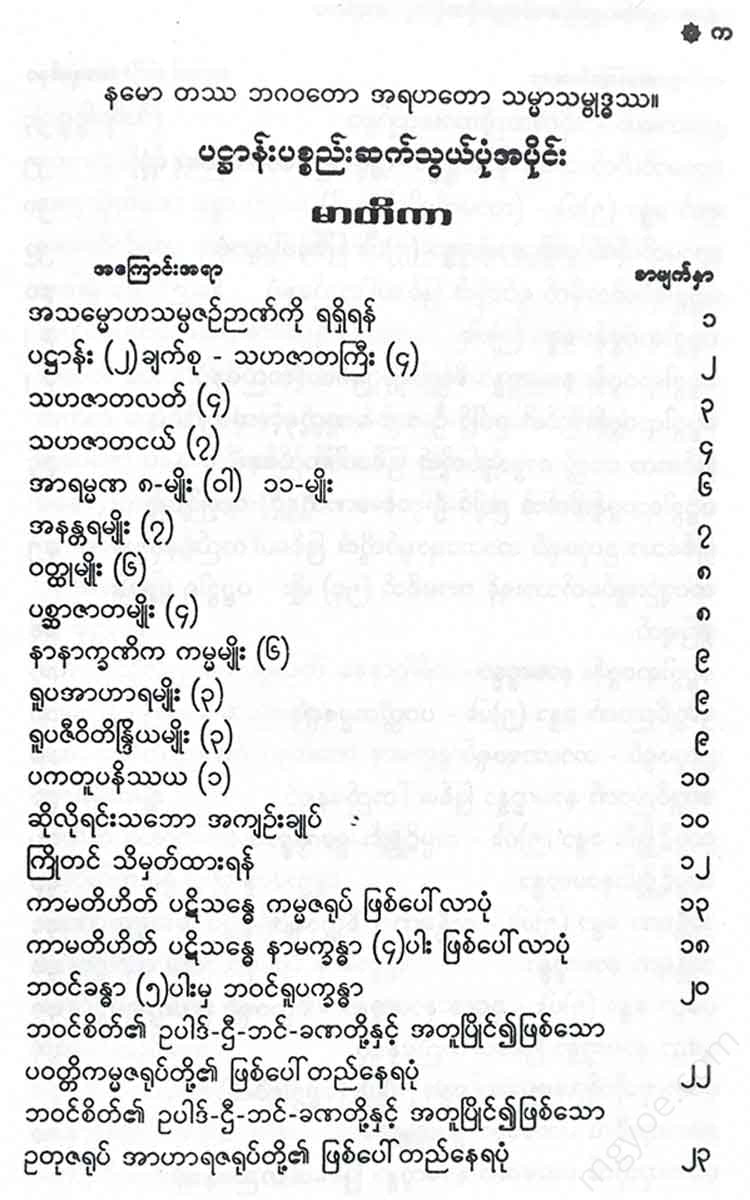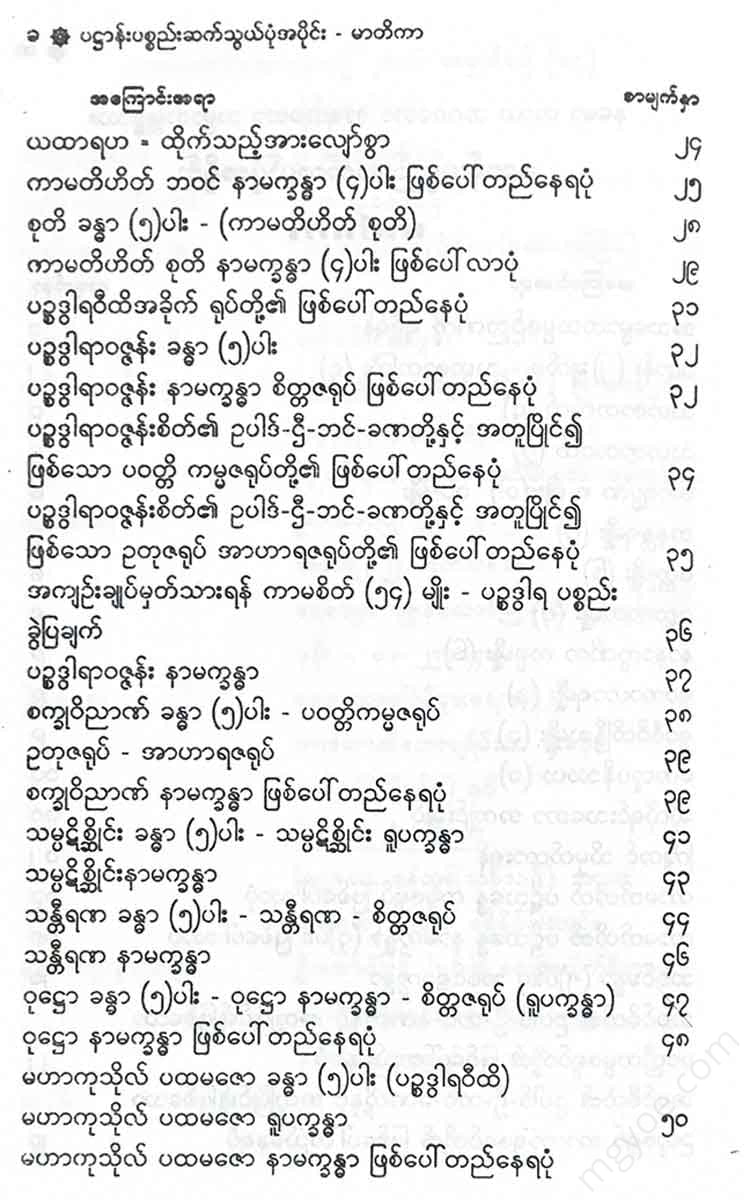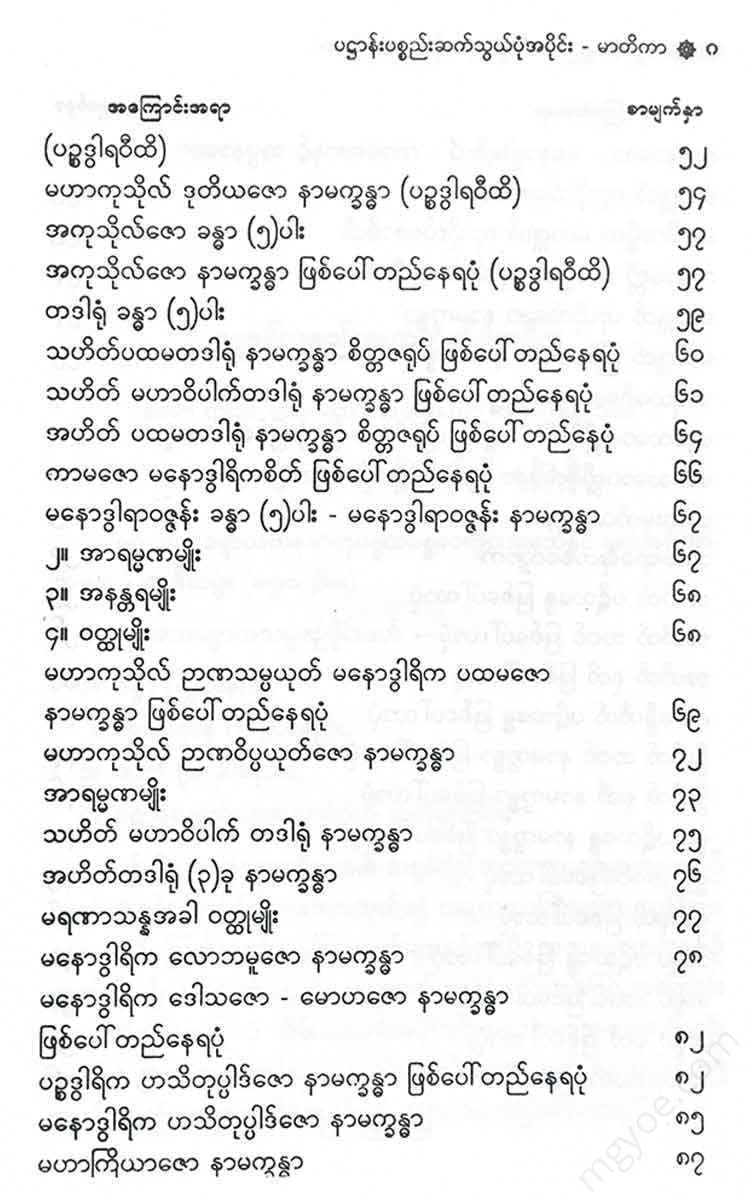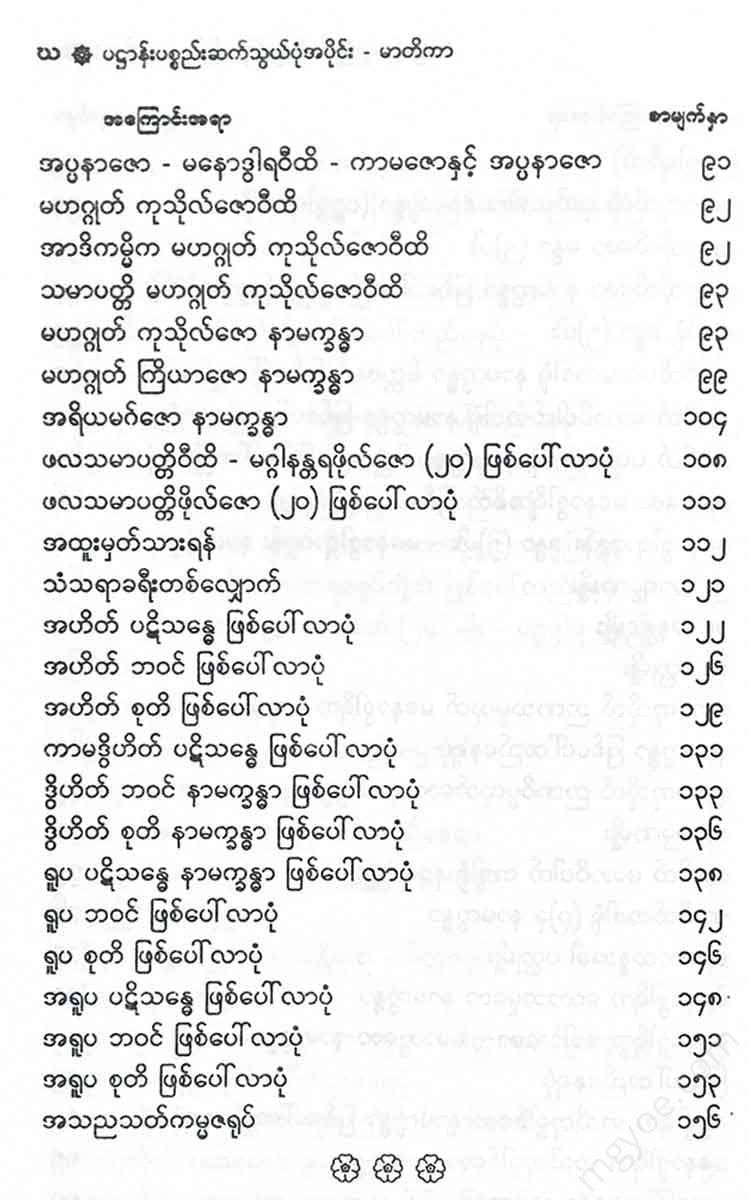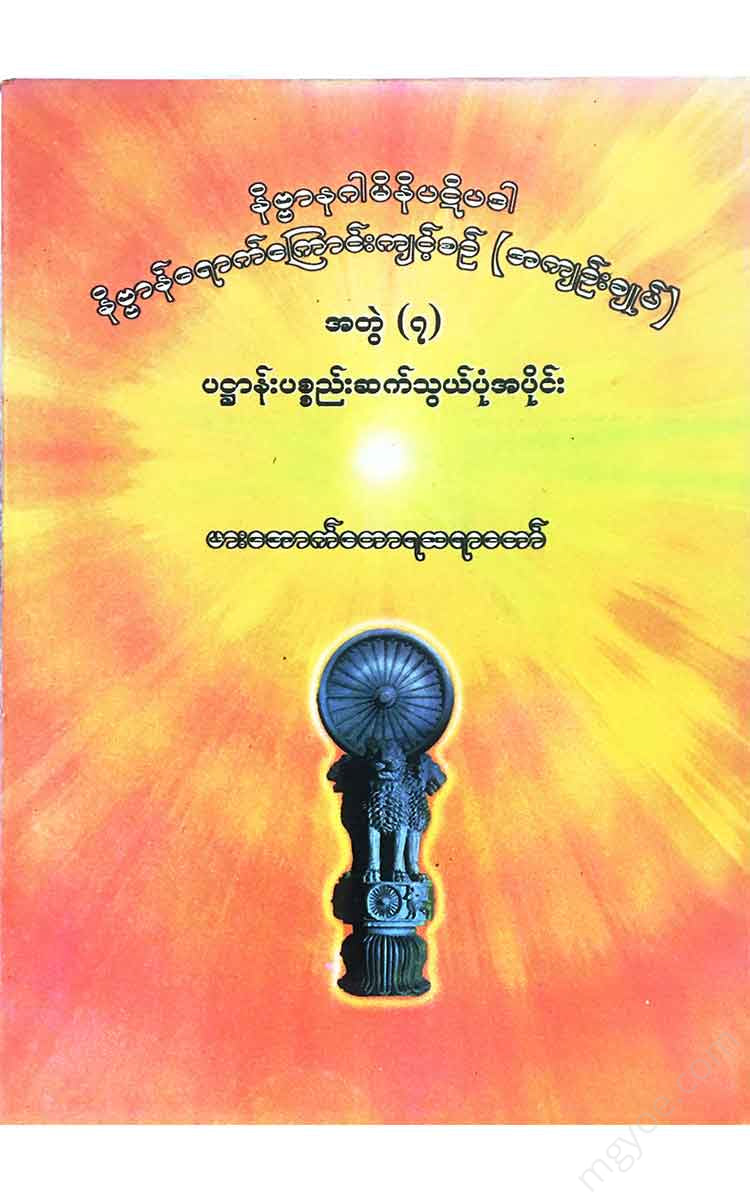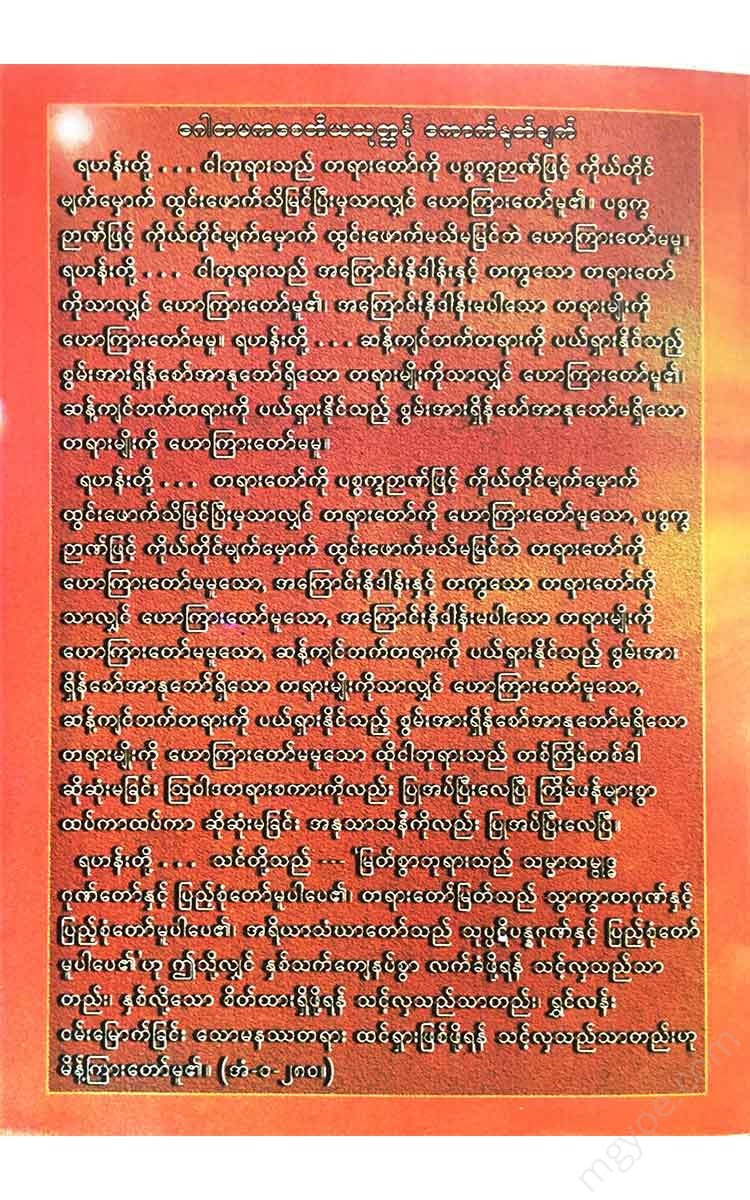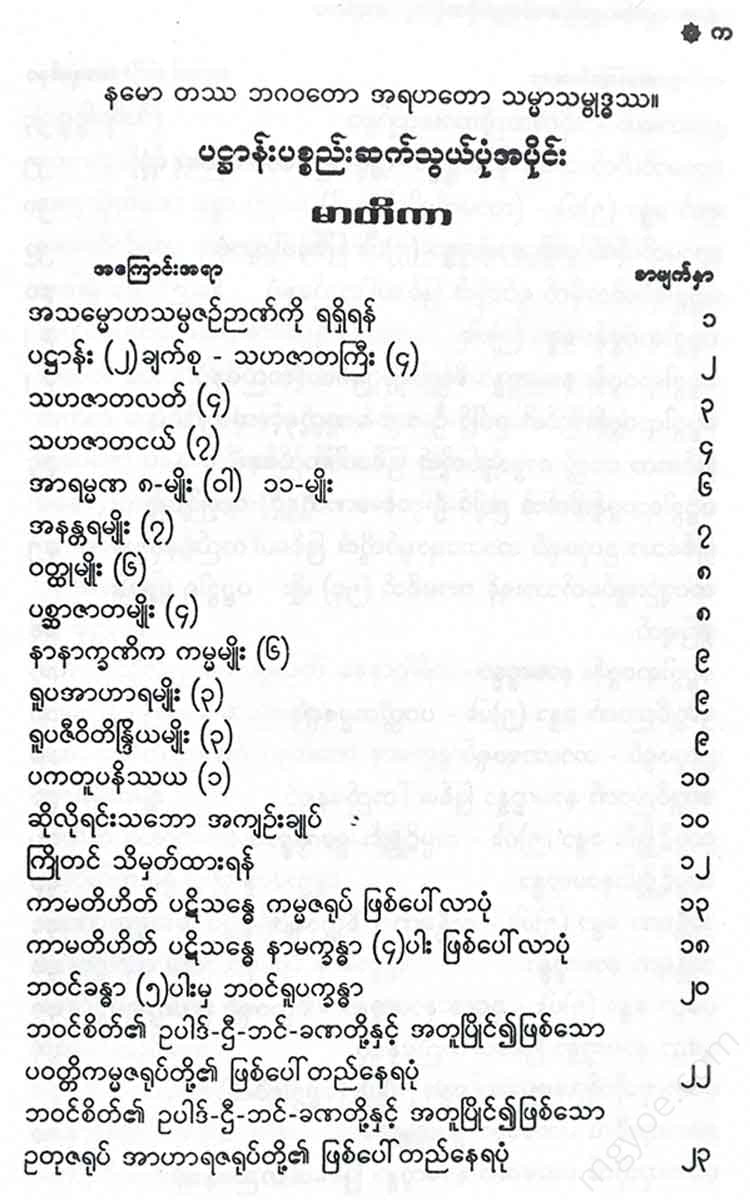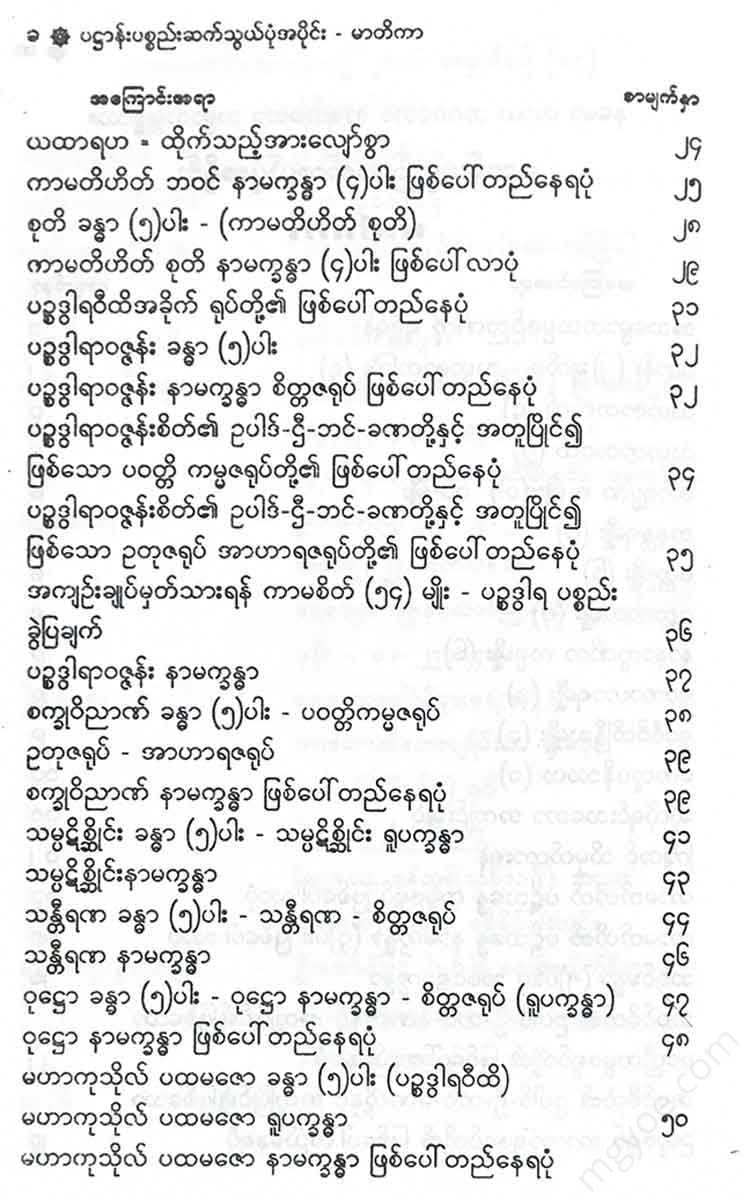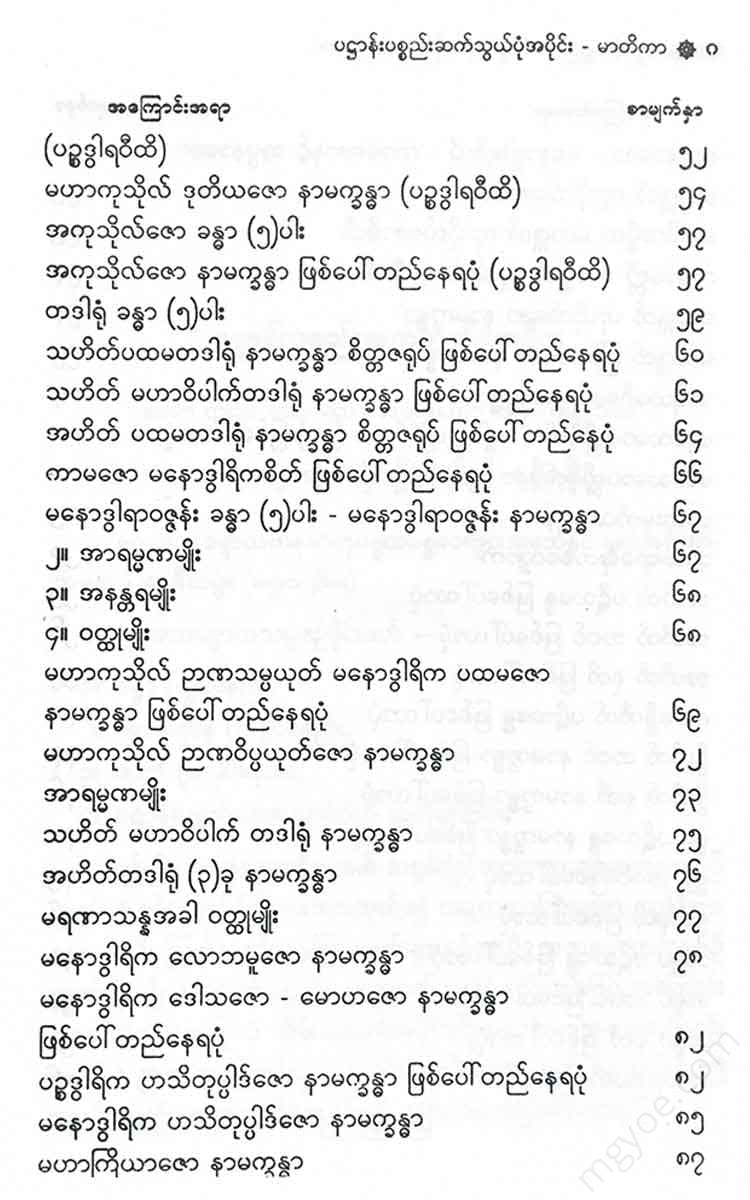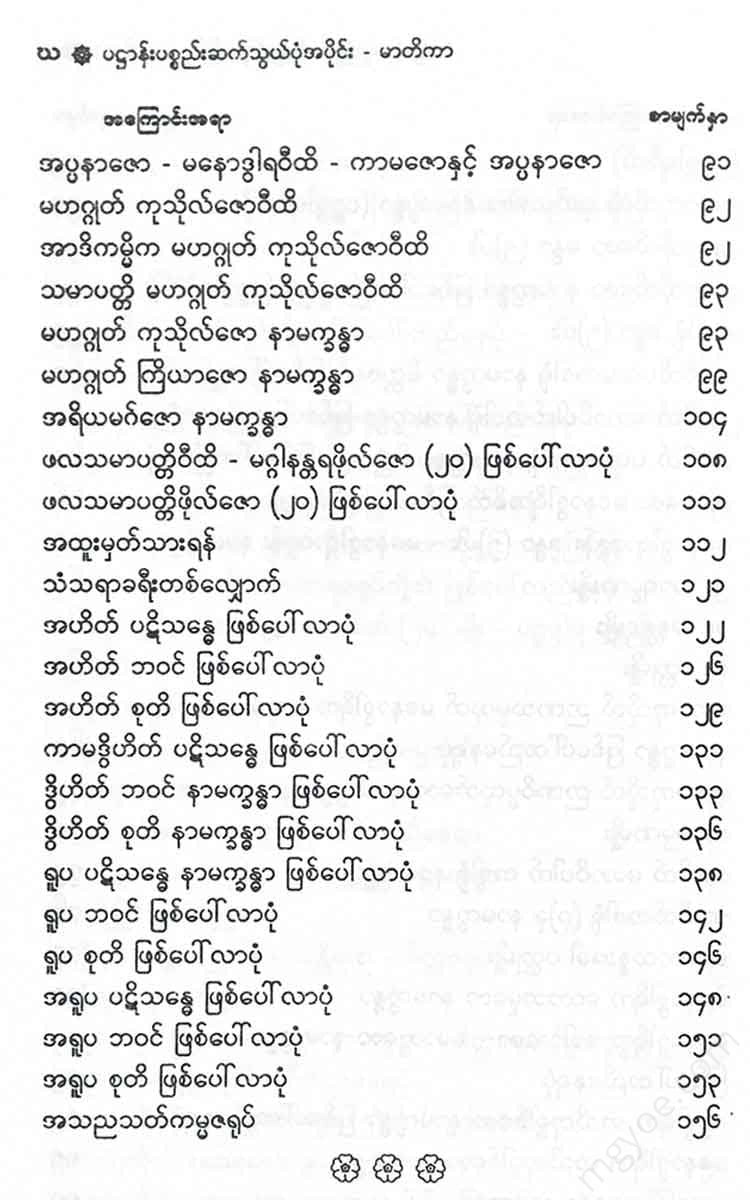Other Websites
Venerable Phor Aok Tora Sayadaw - The Practice of Attaining Nibbana (Summary) (Volume 7)
Venerable Phor Aok Tora Sayadaw - The Practice of Attaining Nibbana (Summary) (Volume 7)
Couldn't load pickup availability
The body is the source of all existence, and the mind is the source of all existence. (Math. 1, 268.)
This is the part of the Asohasambajya -
1. The five (5) body parts,
2. The 12 (twelve) ways of ayātana,
3. How many (18) substances are there?
4. How to think about the relationship between the material and the contract,
The great Atthakathas have instructed us to strive to attain the wisdom of the Supreme Being through the power of such methods. In accordance with these instructions, this section on the connection of the material to the subject is written for the benefit of those who wish to develop their minds through the method of the material to the subject.
A good student who wants to study this section needs to memorize the Pali of the Pathān Pāli, the Burmese translation of the Pali, and the meaning of the Pali. Only then will he be able to understand the concept of the connection of the material and the causal relationship more deeply. After studying this, he should memorize the following two sets of rules. These two sets of rules are also written and presented in the summary of the book of the Abhidhammaharaththaguru, the long-lived and fearless monk, according to the method that the teacher has taught.
********
Namo Buddhasa.
Chapter (2)
Harmony (4)
The material nature of the three states of harmony, nishaya, atthi, and avigata is -
1. Mutual support (89), setāsīkā (52), pāvatti patīsandhe nāmekākhandā (4),
2. Four (4) great pillars that support each other,
3. The four (4) elements of the five-fold path of the
4. When the five-dimensional world, which is composed of the mental form, the form of birth, and the form of action, is formed, the disembodied form is formed.
(4) The fivefold consciousness (10) The mind of the arahants, the mind of concentration (75), the mind of the seta-sika (52),
The four (4) elements of the birth of the Buddha,
5. The four great bodies that are adorned with the Upada form.
The law of the present is -
1. Mutually supportive mind (89), self-reliance (52), self-reliance,
2. The four great principles that support each other,
3. The four elements of the five-fold path, the birth-giving body, and the offering-giving body, which are mutually supportive,
4. The mental form supported by the nama-khandha, the form of conception and action,
5. It is a form of Upada supported by the Mahabodhi.
Harmony (4)
The material law in the night and day is the same as the material law of harmony (1), harmony (2), harmony (3).
The principles of harmony are (1) (2) (3) principles of harmony.
In the case of Vipa, the material law is -
1. The mutual support of the mind,
Namekandha (4),
2. When the Vipakka Cittaja form is in the Panchavākara realm, where the form of the Pati Sandhe Kammaja is attached,
The four (4) unmanifested states, the ten (10) consciousnesses, the pure and concentrated consciousness of the arahants.
The four (4) elements of the bhavistha, the satasthika, the attattisa, the pavatti, the patisandhe, the namakkhandha,
3. The five (4) elements of the namekhandha that are attached to the hadaya material are the five (4) elements of the namekhandha.
The law of the present is -
1. Mutually supportive, non-judgmental, and non-judgmental.
The four (4) elements of the name of the goddess of birth,
2. The mental form, the form of conception and action, supported by the Vipaṭakaṇḍa,
3. The fifth verse of the Hadaya Sutta is supported by the Namakkaṇḍha.
In Sampayutta, the material law is the harmony (1) material law.
The dharma of the samadhi is the dharma of the samadhi.
In the Vippayutta, the material states are the (3) (4) material states.
The three (3) and four (4) are the three (4) elements of the dharma.
Harmony (7)
In the Ehattu, the material dhammas are: greed, anger, delusion, greed, anger, delusion.
The essence of the present is: the mind is one, the delusion is the knowledge of the two, the mind is the form of the mind, the mind is the form of the mind, the mind is the form of the mind.
The material aspect of the supreme object is one of the three (4) elements of desire, effort, mind, and will.
The 52 factors of the mind that are associated with the attainment of the ultimate object are: delusion,
The material law of action is - volition.
The essence of the mind is (89), the mind is the form of the mind,
The material elements of nourishment are: phassa, volition, and consciousness.
The dharma of the mind is (89), the knowledge of the senses, the mental form, the form of the mind, the form of the mind.
In the Indian context, the material elements are: life, mind, feeling, faith, effort, mindfulness, concentration, and knowledge.
The requisites are: mind (89), the knowledge of the senses, the mental form, and the form of conception and action.
The material elements in jhana are: vitaka, visara, piti, vedan, and ekaggata.
The five elements are: the five consciousnesses (10), the mind (79), the two senses, the mental form, the form of conception and action.
The material elements of the path are: wisdom, insight, right action, right livelihood, effort, mindfulness, single-mindedness, and vision.
The dharma of the path is: the mind is one, the knowledge is two, the mind is the form of the mind, the mind is the form of the mind.
8 types of aramana (1) 11 types
In the Arāmāna, the material things are: (6) senses. (89) Mind, which is present, past, and future; (90) Consciousness, which is the knowledge of the body, the eightfold knowledge of matter, and Nibbāna, which is the cessation of time and space; and (10) Law.
The essence of the mind is the mind (89), the knowledge of the mind and the body.
In the Arammanadhipati and Arammanupanissaya, the material dhammas are: the eight forms of Nibbana, which are to be respected: the present, the past, the future, the eight states of existence; the eighty-four states of mind, which are the cessation of anger, the cessation of delusion, the cessation of suffering, the cessation of body and mind, the cessation of anger, the cessation of attachment
The five factors of the path
In the case of the Vattharamana Purajata Nissaya, the Vattharamana Purejata, the Vakvaramana Purajata Deeppayutta, the Vattharamana Purajotathi, and the Ettaramana Purajata Arata, the material state is: When the mind returns to the state of death, it is the (17) mind that arises together with the mind.
The Pasayayuppan Dharma is: When one attains the material object of the five-fold path in the five-fold path, the four seven-fold path is the mind-body-speech, the thirty-fold path of sexual desire, the one-pointed path of
The material nature of the arammana purejāta, the arammana purejāta-tātti, and the arammana purejāta-avigata is the present-day form of nirvana.
The Pasayayuppan Dharma is the wisdom of the mind, the knowledge of the senses, the knowledge of the transcendental consciousness, the knowledge of the non-self, the knowledge of the non-self, the knowledge of the five worlds.
Infinite (7)
The material nature of the infinite,
The dharma of the arahants is the mind of the arahants, along with the mind of the arahants (89), the knowledge of the twofold path.
In the Asevanu, the material world is the eternal,
The first is the knowledge of the first, the second, the third, and the fourth.
The infinite kind - the material law in kamma - is the will that exists in the four paths.
